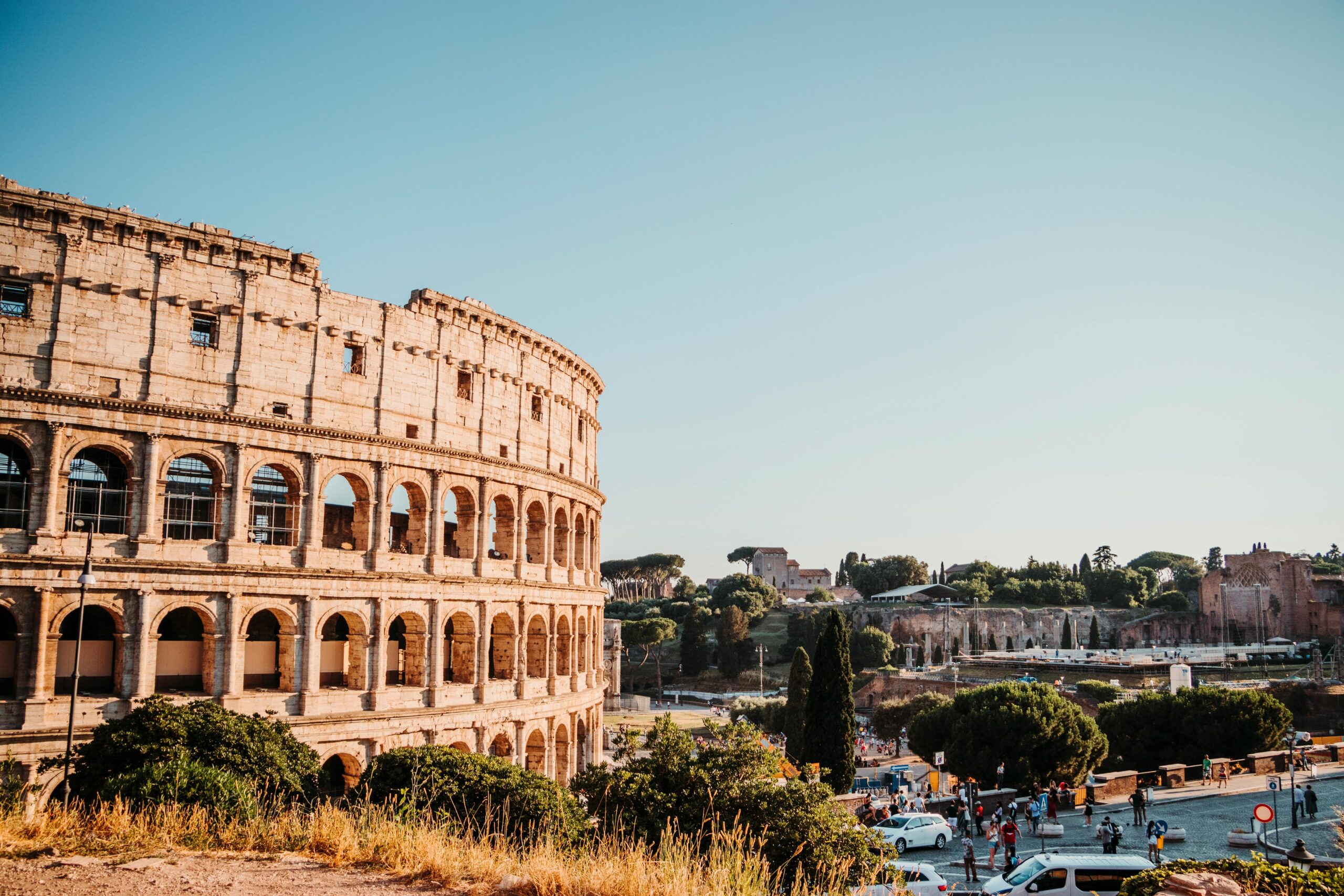The 15 Best Places to Visit in Rome
Rome, one of the best cities to visit in Italy, is a living museum that breathes history and culture. With every step, you’ll encounter stunning remnants of ancient civilizations, from the majestic Colosseum, where gladiators once battled, to the sprawling ruins of the Roman Forum, the heart of ancient Rome’s public life. Founded in 753 BC, Rome boasts over 2,700 years of history, being the birthplace of the Roman Empire. Each corner of the city, including landmarks like the Pantheon and the opulent Vatican City, tells a story, making it one of the best cities to visit for anyone fascinated by the past.
Yet, Rome is not just about history; it’s a vibrant metropolis where modern life seamlessly intertwines with its rich heritage. The city’s bustling piazzas, such as Piazza Navona and Campo de Fiori, offer lively atmospheres filled with cafes, street performers, and markets. The culinary scene is unparalleled, with trattorias serving mouthwatering Italian dishes that reflect Rome’s authentic flavors. From its architectural marvels, including the ancient aqueducts that still supply water to the city, to its energetic street life, Rome stands out as one of the best cities to visit in Italy, captivating visitors with its timeless charm and dynamic spirit.
These are the 15 best places to visit in Rome:
1. Colosseum
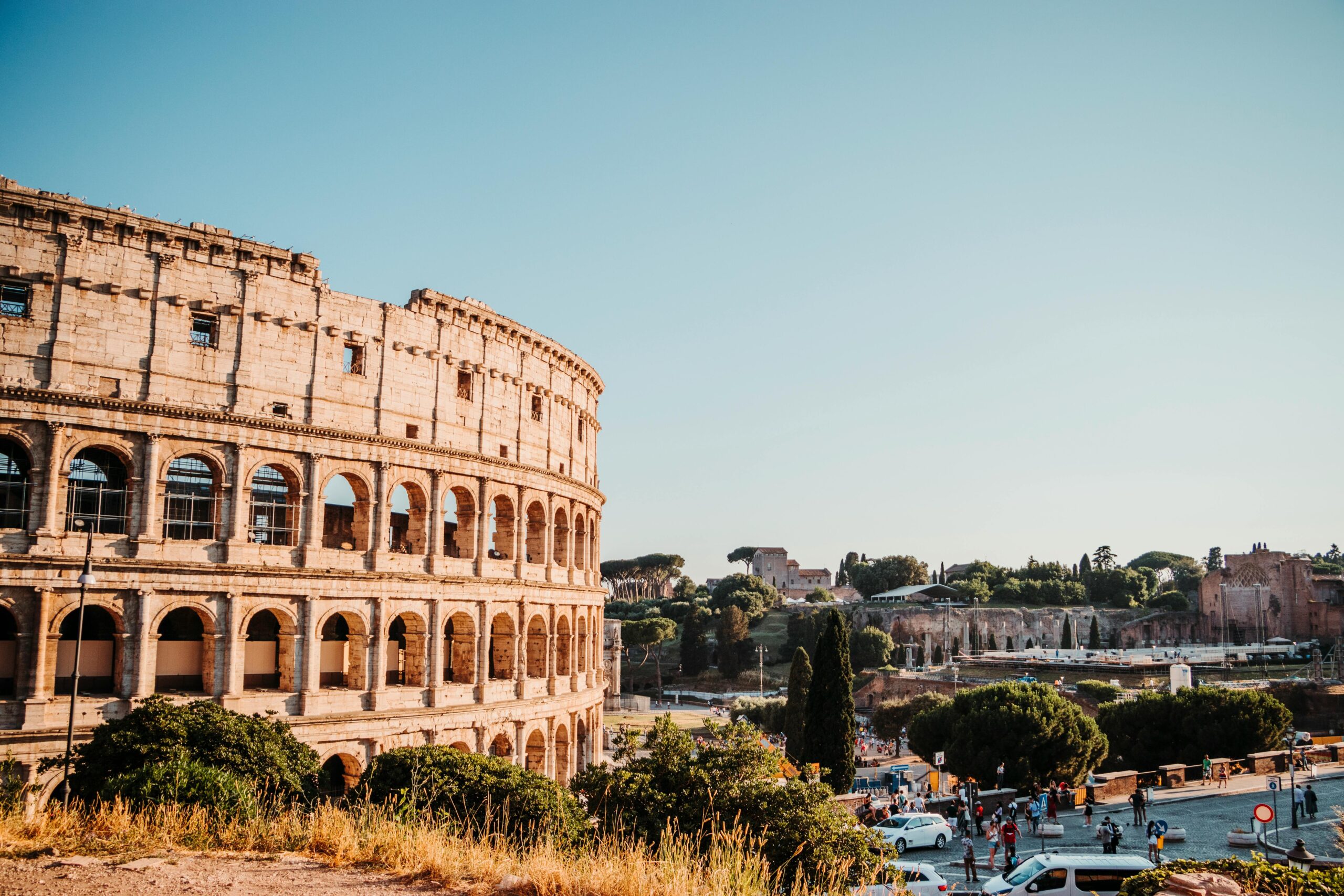
The Colosseum, a monumental symbol of ancient Rome, stands as a testament to the grandeur of one of the best cities to visit in Italy. This iconic amphitheater, built in AD 80, was the epicenter of entertainment, where gladiators clashed, and wild animals roared, captivating the hearts of spectators. As you walk through its massive stone arches and imagine the deafening cheers of 50,000 Romans, the Colosseum’s history comes alive, making it an essential stop for anyone exploring the best cities to visit.
Visiting Rome, one of the best cities to visit in Italy, is incomplete without marveling at the Colosseum’s architectural brilliance. This ancient marvel, with its intricate design and storied past, offers a unique glimpse into the might of the Roman Empire. Whether you’re a history enthusiast or simply seeking awe-inspiring sites, the Colosseum embodies the rich tapestry of Italy’s heritage, standing proudly as a cornerstone of Rome’s timeless allure.
Details
Address: Piazza del Colosseo, 1, 00184 Roma RM
Price: General Admission: €18 (24-hour ticket, combined with the Roman Forum and Palatine Hill); Children 0yo-17yo: €0; EU Residents 18yo-24yo: €2.
Opening hours: Open 8:30 am – 7:15 pm daily.
2. The Roman Forum & Palatine Hill
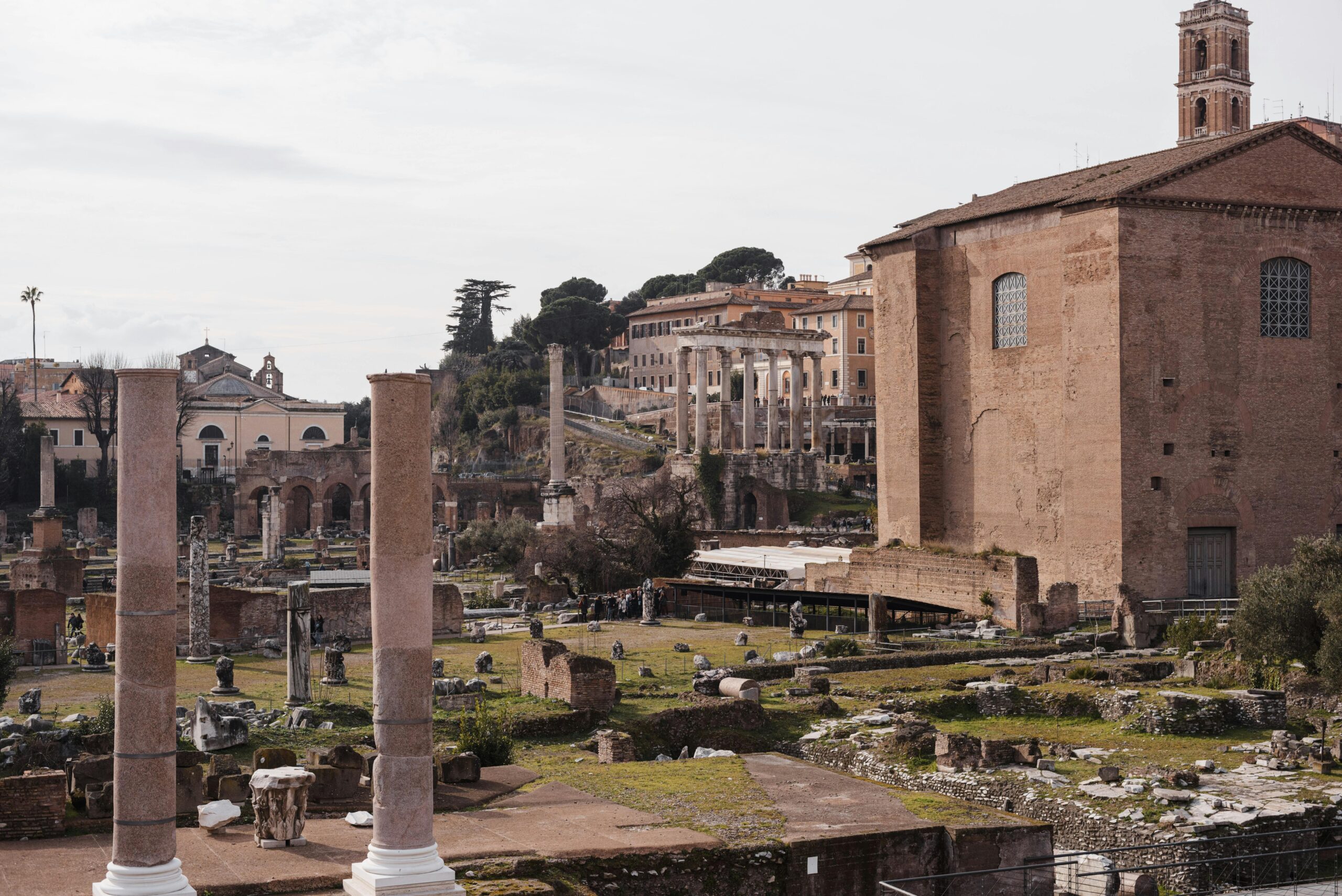
Discover the heart of ancient civilization at the Roman Forum and Palatine Hill, where millennia of history unfold in a maze of ruins and archaeological wonders. Wander through the remnants of temples, basilicas, and government buildings that once served as the bustling center of public life and political intrigue. As you stroll along the worn paths, imagine the echoes of voices from the past — from senators debating laws to citizens discussing daily affairs. This open-air museum offers a captivating glimpse into the city’s vibrant past, where every column and archway tells a story of the Roman Empire’s rise and fall.
Adjacent to the Forum lies the Palatine Hill, revered as the legendary birthplace of Rome itself and later the residence of its emperors. Here, sprawling ruins of imperial palaces and lavish gardens evoke the grandeur and opulence of ancient Roman rulers. From this vantage point, enjoy sweeping views of the cityscape, gaining insight into the strategic significance of this historic site. Whether you’re a history enthusiast or simply captivated by the allure of ancient civilizations, the Roman Forum and Palatine Hill offer an unparalleled journey through time, providing a profound connection to the foundations of Western civilization.
Details
Address: 00186 Rome, Metropolitan City of Rome
Price: General Admission: €18 (24-hour ticket, combined with the Roman Forum and Palatine Hill)
Opening hours: Open 9 am – 7:15 pm daily.
3. St. Peter’s Basilica

St. Peter’s Basilica stands as a monumental testament to centuries of architectural brilliance and religious significance. Its grandeur is immediately striking, with a façade adorned by intricate details and colossal columns that lead visitors into an expansive plaza. The basilica’s interior is a marvel of Renaissance and Baroque artistry, featuring masterpieces such as Michelangelo’s iconic dome and Bernini’s majestic baldachin. Every corner reveals ornate chapels, marble sculptures, and meticulously crafted mosaics, all contributing to an atmosphere of profound spiritual and historical importance.
Beyond its artistic splendor, St. Peter’s Basilica is the spiritual heart of a global faith community. Pilgrims and tourists alike are drawn not only to its architectural magnificence but also to its role as a place of worship and pilgrimage. Whether marveling at the sheer scale of the nave or reflecting in quiet contemplation within its sacred spaces, visitors experience a profound connection to history and faith that transcends time and borders. St. Peter’s Basilica thus remains an enduring symbol of human creativity, devotion, and the enduring legacy of cultural heritage.
Details
Address: Piazza San Pietro, 00120 Città del Vaticano
Price: General Admission: €6; Children 6yo-14yo: €4; Children 0yo-5yo: €0.
Opening hours: Open 7:30 am – 6:30 pm daily.
4. Vatican Museums & Sistine Chapel
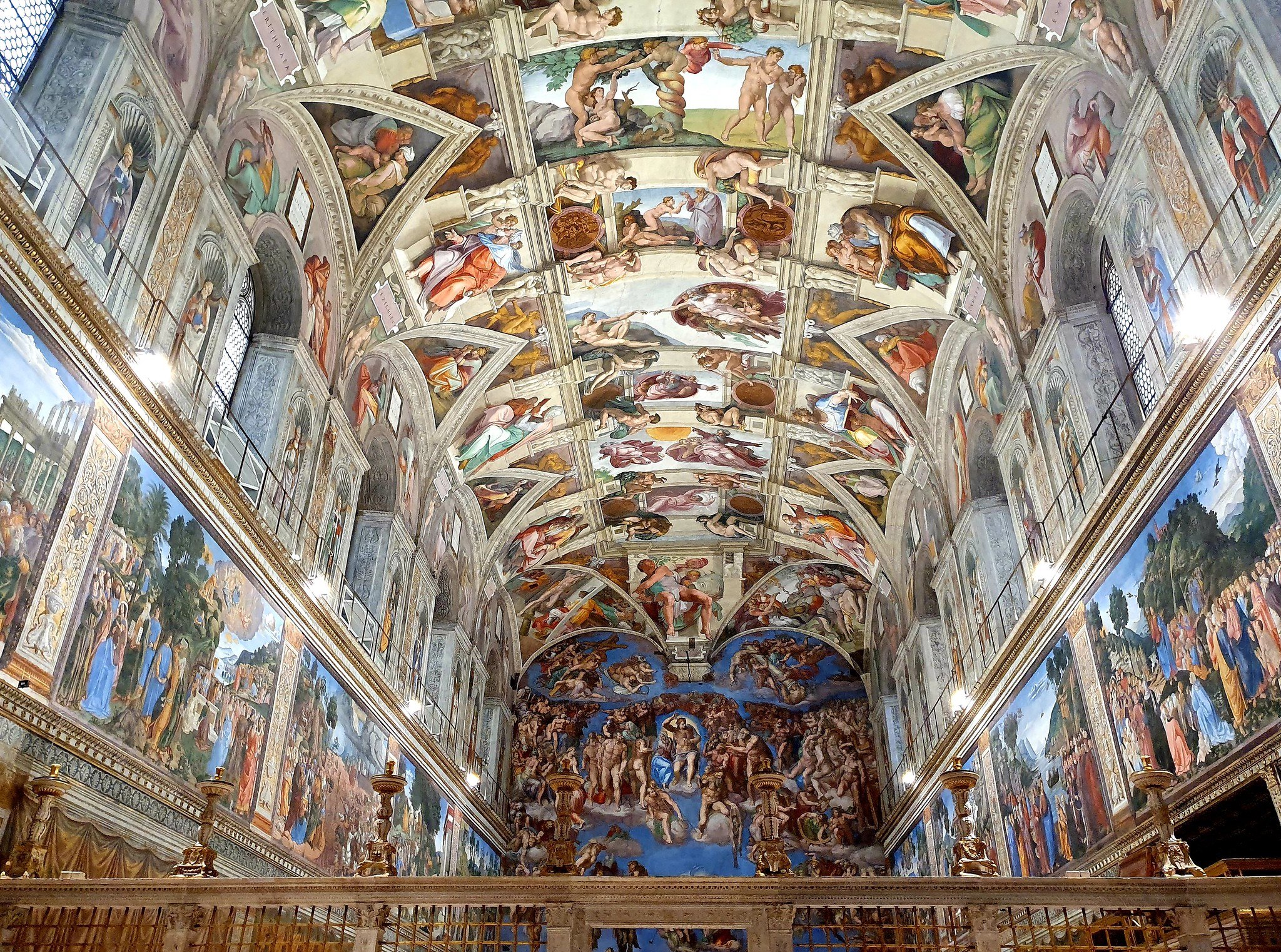
Discover the pinnacle of artistic and cultural heritage at one of the world’s most renowned museum complexes, encompassing the Vatican Museums and the iconic Sistine Chapel. Immerse yourself in centuries of history and artistic genius as you traverse through a labyrinthine collection of galleries and corridors. Each room presents a treasure trove of masterpieces from various periods, from ancient sculptures and Renaissance paintings to intricate tapestries and historical artifacts. The museums are a testament to human creativity and expression, offering visitors a profound glimpse into the evolution of art and civilization.
At the heart of this expansive museum complex lies the Sistine Chapel, a revered sanctuary adorned with the timeless frescoes of Michelangelo. Marvel at the awe-inspiring ceiling, where the artist’s intricate brushstrokes bring biblical narratives to life with unparalleled grandeur. The chapel’s walls, painted by other Renaissance masters, further enrich the experience, making it a pilgrimage for art enthusiasts and historians alike. Whether you’re drawn to the profound spirituality embedded in every stroke or simply seeking to witness some of the world’s most celebrated artworks, the Vatican Museums and Sistine Chapel promise an unforgettable journey through the heights of human creativity and cultural legacy.
5. Pantheon
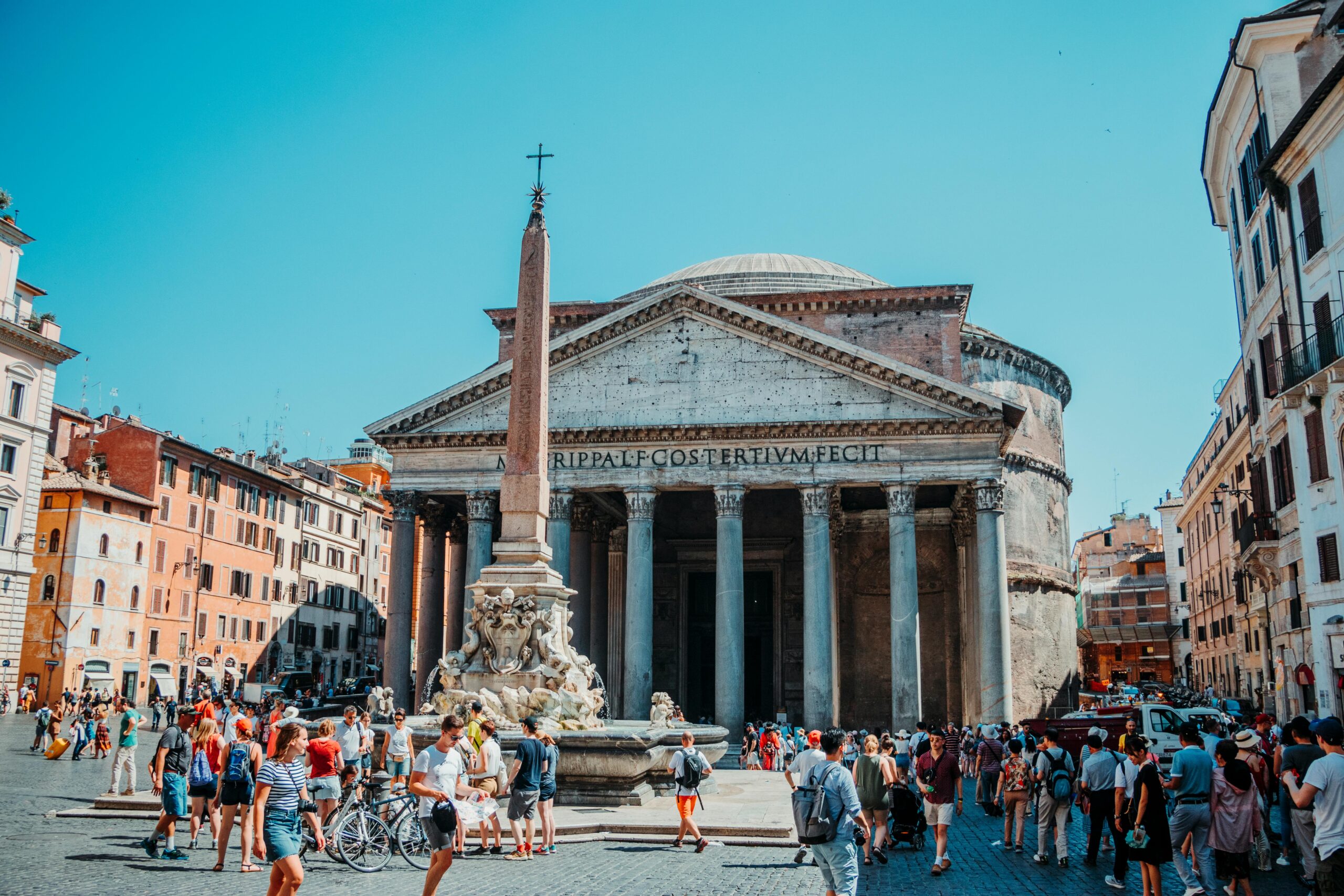
The Pantheon stands as a timeless marvel of ancient engineering and architectural ingenuity. Originally commissioned as a temple dedicated to all gods, its construction dates back to the early 2nd century AD. What makes the Pantheon truly remarkable is its iconic domed roof, the largest unreinforced concrete dome in the world to this day. The precision and symmetry of its design continue to awe visitors, showcasing the mastery of Roman builders in creating structures that endure through centuries.
Entering the Pantheon, visitors are greeted by the grandeur of its expansive interior, bathed in natural light filtering through the famous oculus at the apex of the dome. The play of light and shadow across the ancient marble floors and ornate walls offers a serene yet awe-inspiring atmosphere. The harmonious blend of classical Greek architectural elements with Roman engineering prowess is evident throughout, making the Pantheon a testament to the cultural fusion and technological advancements of its time. Today, it remains a symbol of architectural perfection and a must-visit for anyone intrigued by the legacy of ancient civilizations.
Details
Address: Piazza della Rotonda, 00186 Roma RM
Price: General Admission €25.50 (Guided Tour in English of the Pantheon with Ticket)
Opening hours: Open 9 am – 7 pm daily.
6. The Trevi Fountain

The Trevi Fountain stands as an iconic masterpiece of Baroque artistry, captivating visitors with its grandeur and intricate detailing. This stunning fountain serves as a testament to the skill of its creators, with every sculptural element telling a story of mythological significance. At its heart, a colossal statue of Oceanus dominates the scene, surrounded by tritons and seahorses that seem to come alive in the cascading waters.
Visitors are drawn not only to its artistic beauty but also to the tradition of tossing a coin into its waters, a gesture believed to ensure a return visit to the city. The play of light and water creates a mesmerizing spectacle, particularly in the evening when the fountain is bathed in soft illumination. The Trevi Fountain is not merely a sight to behold but an experience that immerses visitors in the rich cultural tapestry of its surroundings, making it a must-see for anyone exploring the essence of European heritage and artistic brilliance.
Details
Address: Piazza di Trevi, 00187 Roma RM
7. Castel Sant’Angelo
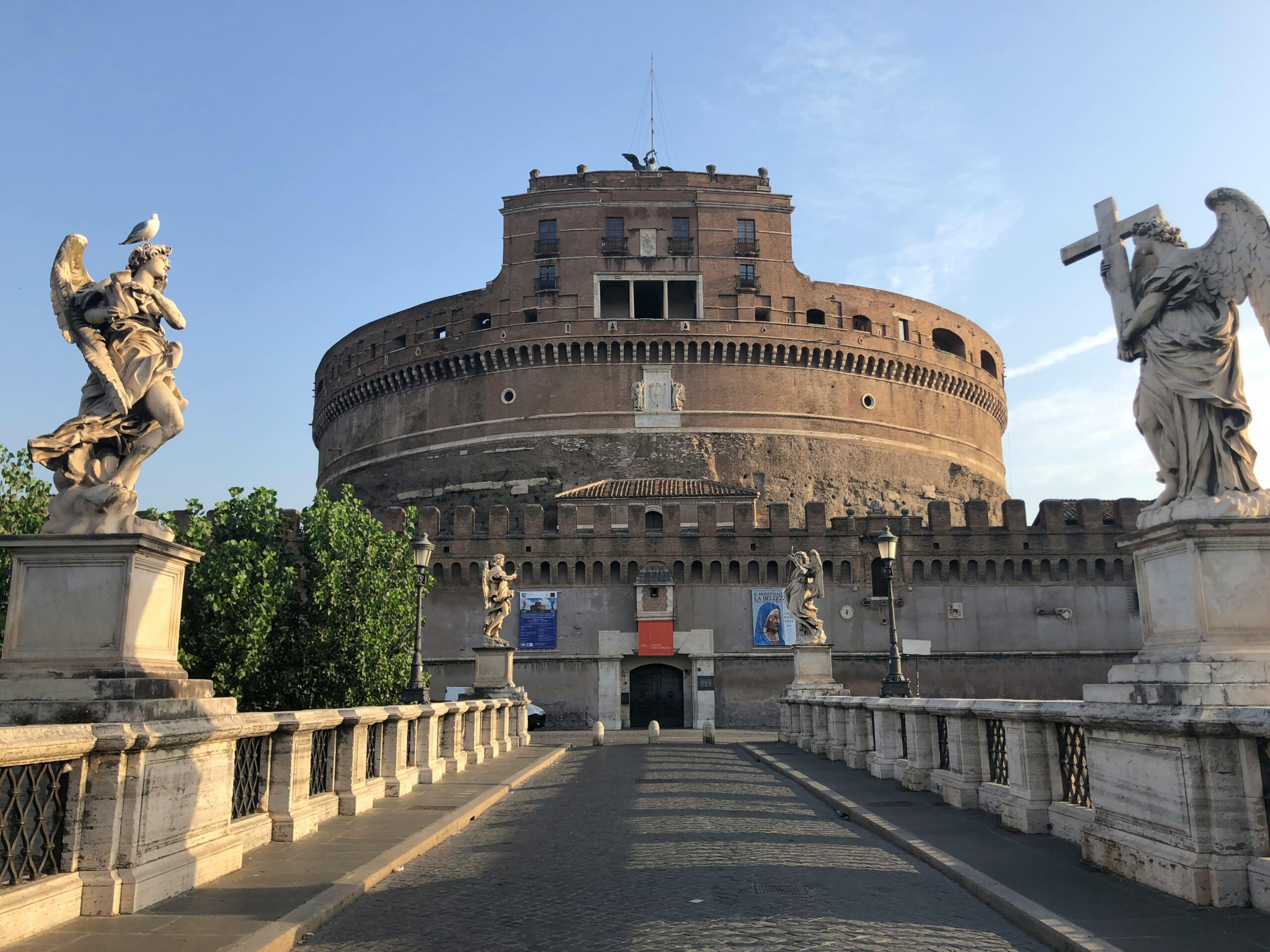
Castel Sant’Angelo stands as a monumental testament to history and architectural ingenuity. Originally built as a mausoleum for the Roman Emperor Hadrian in the 2nd century AD, this cylindrical fortress has evolved over centuries to serve various roles, including as a papal residence, a military fortress, and a prison. Its towering presence along the skyline is a captivating blend of Roman imperial grandeur and medieval defensive prowess.
Visitors are drawn to its formidable walls and iconic cylindrical shape, crowned by a statue of Archangel Michael. Inside, the castle reveals a rich tapestry of history through its numerous chambers, including the ornate papal apartments, intricate Renaissance frescoes, and a secret escape passage famously used by Pope Clement VII. The view from the castle’s terrace offers a breathtaking panorama of the surrounding urban landscape, making it a must-visit for history enthusiasts and those intrigued by the intersection of architecture, power, and artistry. Castel Sant’Angelo is not just a fortress; it’s a living testament to Rome’s enduring legacy through the ages.
Details
Address: Lungotevere Castello, 50, 00193 Roma RM
Price: General Admission €23; Children 0yo-17yo: €3.50.
Opening hours: Open 9 am – 7:30 pm from Tuesday to Sunday. Closed on Mondays.
8. Monument of Vittorio Emanuele II
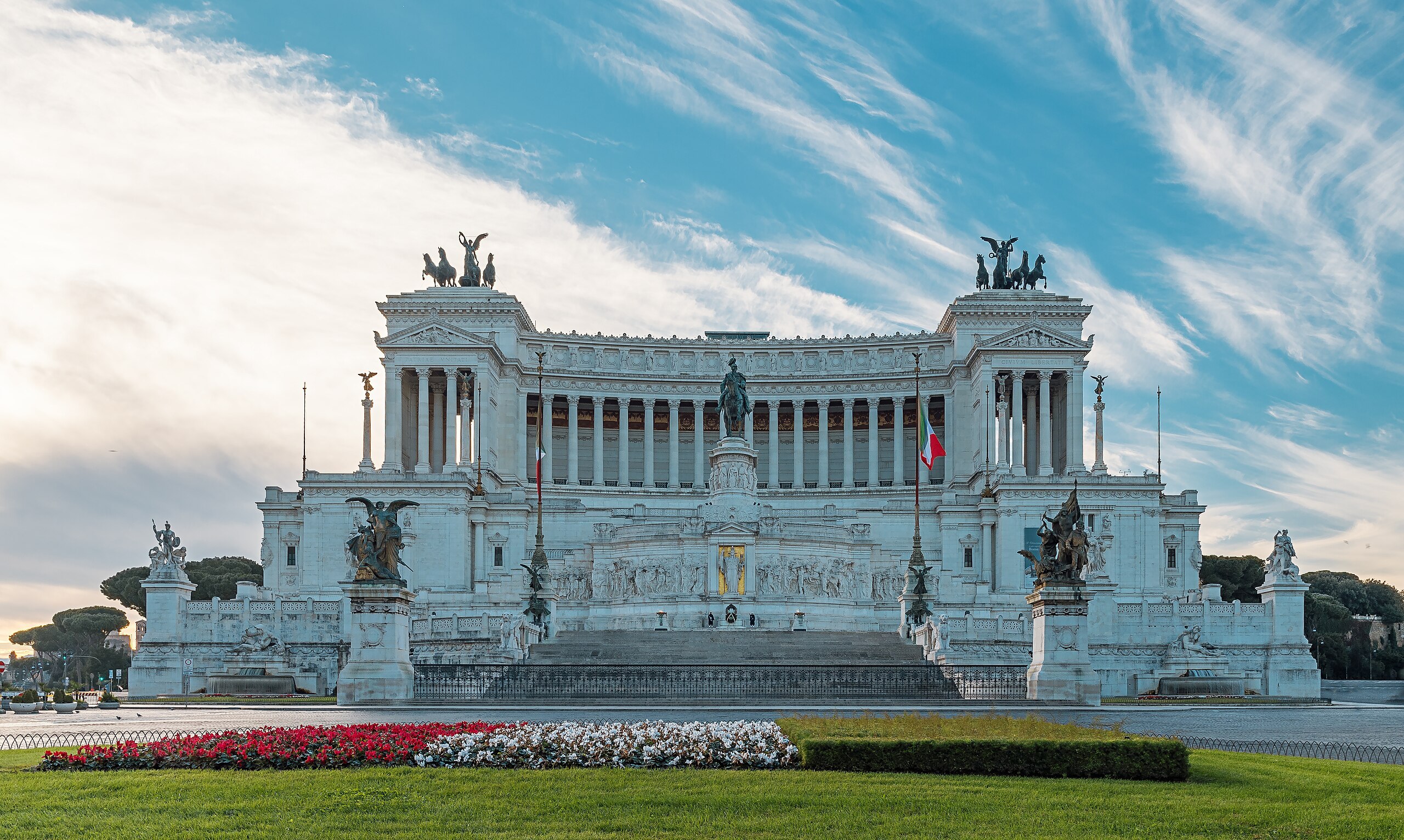
The Monument of Vittorio Emanuele II, a grandiose structure dedicated to the first king of a unified Italy, stands as an iconic symbol of national identity and unity. Dominating the urban skyline with its imposing white marble façade and intricate carving, this monumental complex commands attention with its neoclassical design and sheer scale. Visitors are drawn to its sweeping staircases, grand colonnades, and majestic equestrian statue at the center, encapsulating the essence of Italian patriotism and history.
Inside, the monument houses a museum that chronicles Italy’s journey to unification, offering profound insights into the country’s cultural and political evolution. The expansive rooftop terrace provides breathtaking panoramic views of the surrounding cityscape, making it a perfect vantage point for capturing memorable photographs and appreciating the architectural prowess that defines this enduring symbol of Italian heritage.
Details
Address: Piazza Venezia, 00186 Roma RM
Price: General Admission for panoramic lifts: €7; Children 0yo-17yo: €3.50.
Opening hours: Open 9:30 am – 7:30 pm daily.
9. Galleria & Villa Borghese
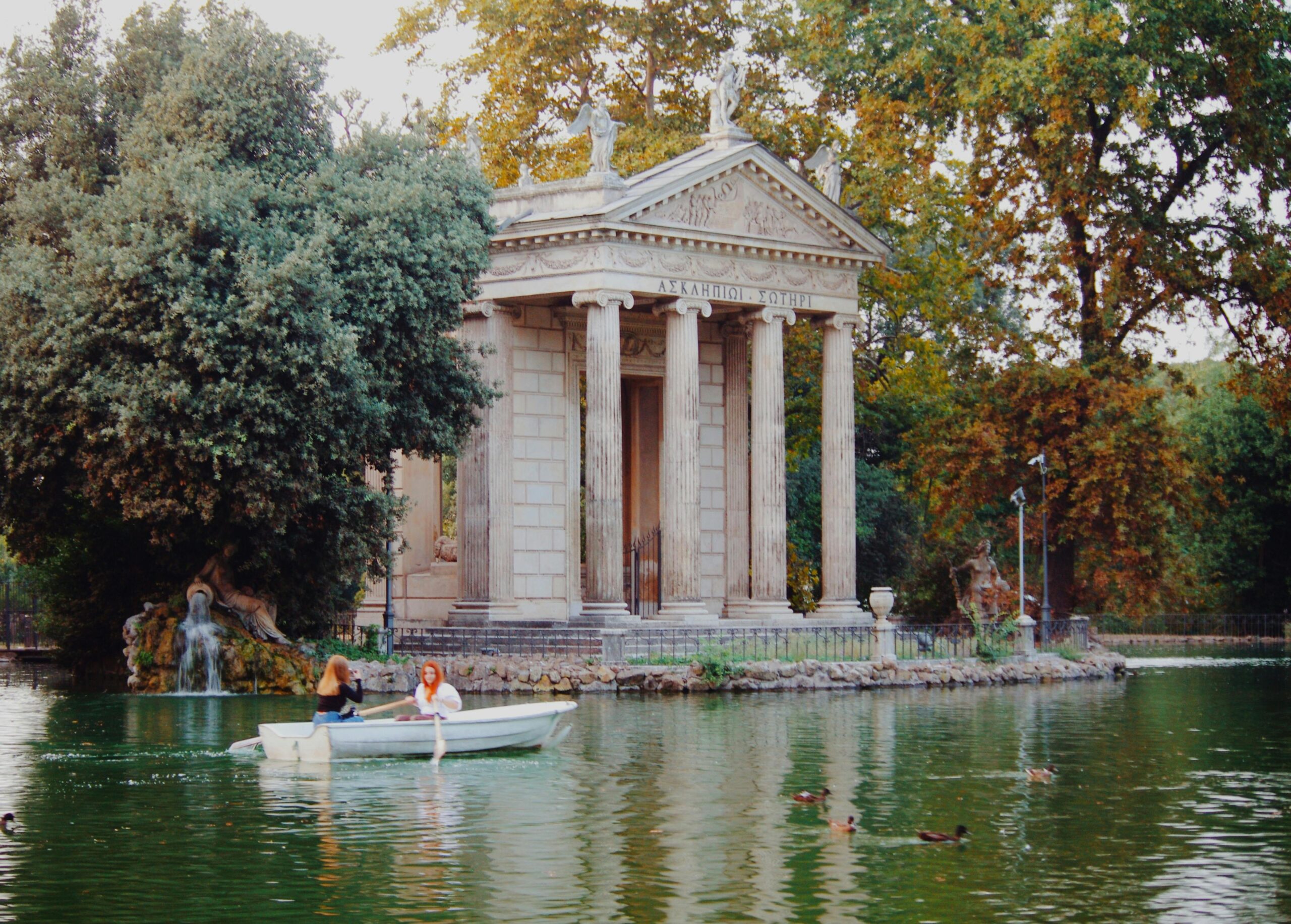
The Galleria Borghese, nestled within the historic Villa Borghese, offers an unparalleled cultural experience, housing one of the world’s most extraordinary private art collections. Visitors are treated to an impressive array of works by masters such as Caravaggio, Bernini, Raphael, and Titian. The gallery’s intimate setting allows for a close and personal encounter with iconic pieces, from Bernini’s dynamic sculptures to Caravaggio’s dramatic paintings, making it a haven for art enthusiasts and historians alike.
The Villa Borghese itself is a masterpiece of architecture and design, reflecting the opulence and taste of its original patrons. Inside, richly decorated rooms provide a stunning backdrop to the art, with intricately designed ceilings, frescoes, and period furnishings that enhance the grandeur of the collection. The Galleria and Villa Borghese together offer a captivating journey through art and history, making it a must-visit destination for those seeking to immerse themselves in the cultural heritage and artistic brilliance of the past.
Details
Address: Piazzale Scipione Borghese, 5, 00197 Roma RM
Price: General Admission: €20.
Opening hours: Open 9 am – 7 pm daily.
10. Capitoline Museums
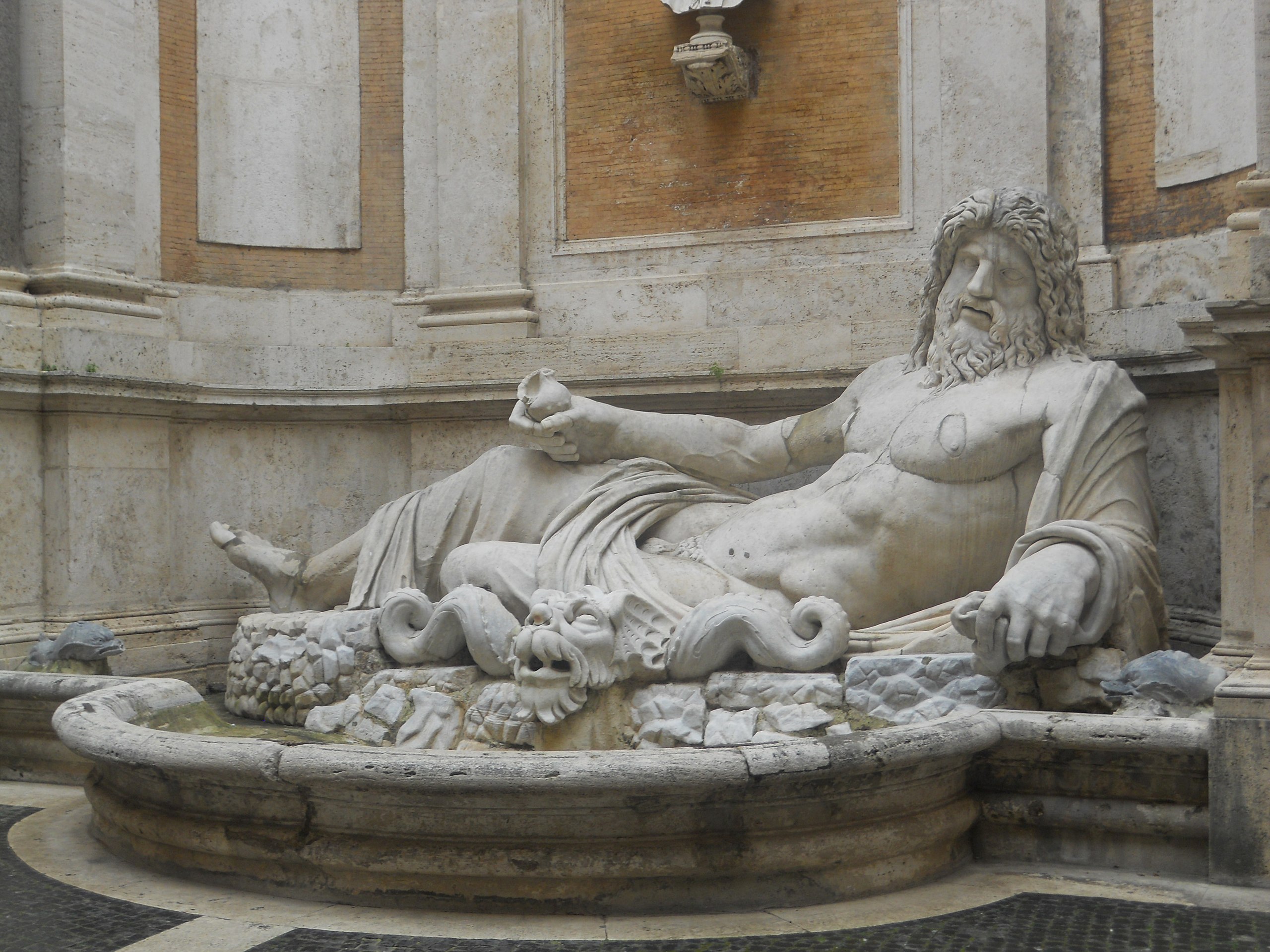
The Capitoline Museums, housed in magnificent Renaissance palaces across the Piazza del Campidoglio, offer an unparalleled journey through ancient history and classical art. As the world’s oldest public museum complex, they boast an extensive collection of Roman antiquities, including iconic sculptures like the Dying Gaul and the majestic equestrian statue of Marcus Aurelius. The museums’ grand halls and richly adorned rooms provide a striking backdrop to masterpieces by artists such as Caravaggio and Titian, making it a haven for art lovers and history enthusiasts alike.
In addition to the impressive art and artifacts, the Capitoline Museums also feature an array of ancient inscriptions, mosaics, and coins that provide insight into the rich cultural heritage of the past. The thoughtfully curated exhibits, combined with the stunning architectural details of the buildings themselves, create an immersive experience that transports visitors to a different era. Whether you are an avid historian or simply curious about ancient civilizations, the Capitoline Museums offer a captivating glimpse into the world of antiquity and the enduring legacy of classical art.
Details
Address: Piazza del Campidoglio, 1, 00186 Roma RM
Price: General Admission: €18.50.
Opening hours: Open 9:30 am – 7:30 pm daily.
11. Piazza del Campidoglio
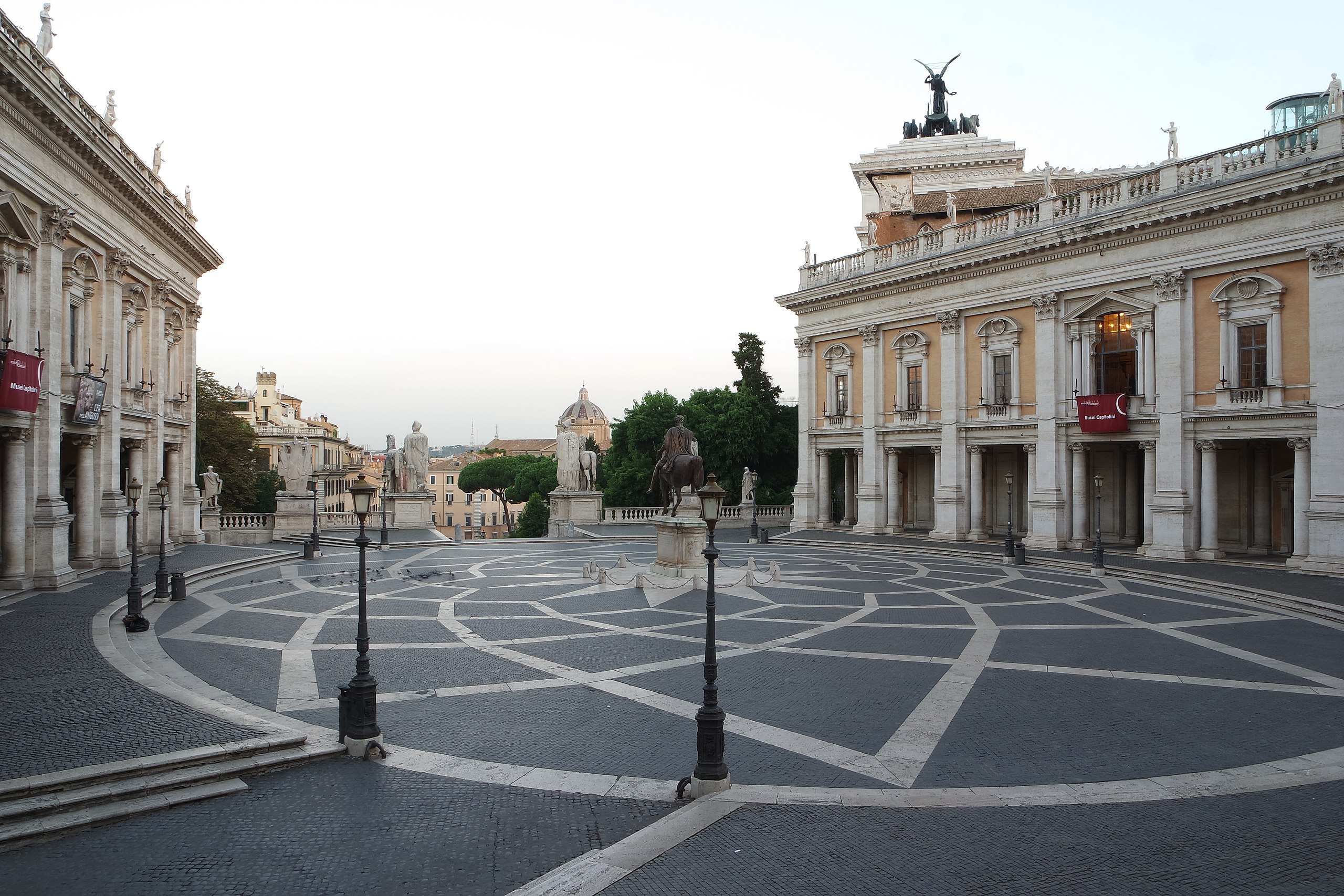
Piazza del Campidoglio, designed by Michelangelo, is a masterpiece of Renaissance urban planning and architecture. This historic square is framed by three grand palaces: Palazzo Senatorio, Palazzo dei Conservatori, and Palazzo Nuovo. At its center stands an iconic replica of the equestrian statue of Marcus Aurelius, symbolizing the enduring legacy of Roman history and culture. The geometric paving, also a Michelangelo design, enhances the elegance of the space, creating a harmonious blend of classical and Renaissance elements.
The piazza is not only an architectural marvel but also a cultural hub, housing the Capitoline Museums within the palaces. These museums offer a rich collection of ancient Roman art, sculptures, and artifacts, providing visitors with an immersive journey through time. The piazza’s elevated position grants it a unique vantage point, making it a serene retreat from the bustling city streets below. Visitors can explore the historical and artistic treasures of the museums or simply enjoy the serene atmosphere of this beautifully designed square.
Details
12. Spanish Steps

The Spanish Steps, a marvel of Baroque architecture, stand as one of the most iconic and vibrant spots in the heart of the city. This grand staircase, composed of 135 steps, was completed in 1725 to connect the Piazza di Spagna at the base with the Trinità dei Monti church at the summit. The steps are renowned for their elegant design, featuring a captivating blend of curves, straight flights, and terraces. Visitors are often seen relaxing on the steps, enjoying the bustling atmosphere, and admiring the surrounding historic buildings and sophisticated boutiques.
The base of the Spanish Steps is marked by the Fontana della Barcaccia, a beautiful fountain designed by Pietro Bernini and his son, the famed Gian Lorenzo Bernini. This unique fountain, shaped like a sinking boat, adds to the charm and allure of the location. The steps have also served as a backdrop for numerous cultural and social events, making them a vibrant hub of activity. With its combination of architectural grandeur and lively ambiance, the Spanish Steps are an essential destination for anyone seeking to experience the cultural essence and historic charm of the city.
Details
Address: Piazza di Spagna, 00187 Roma RM
13. Piazza Navona
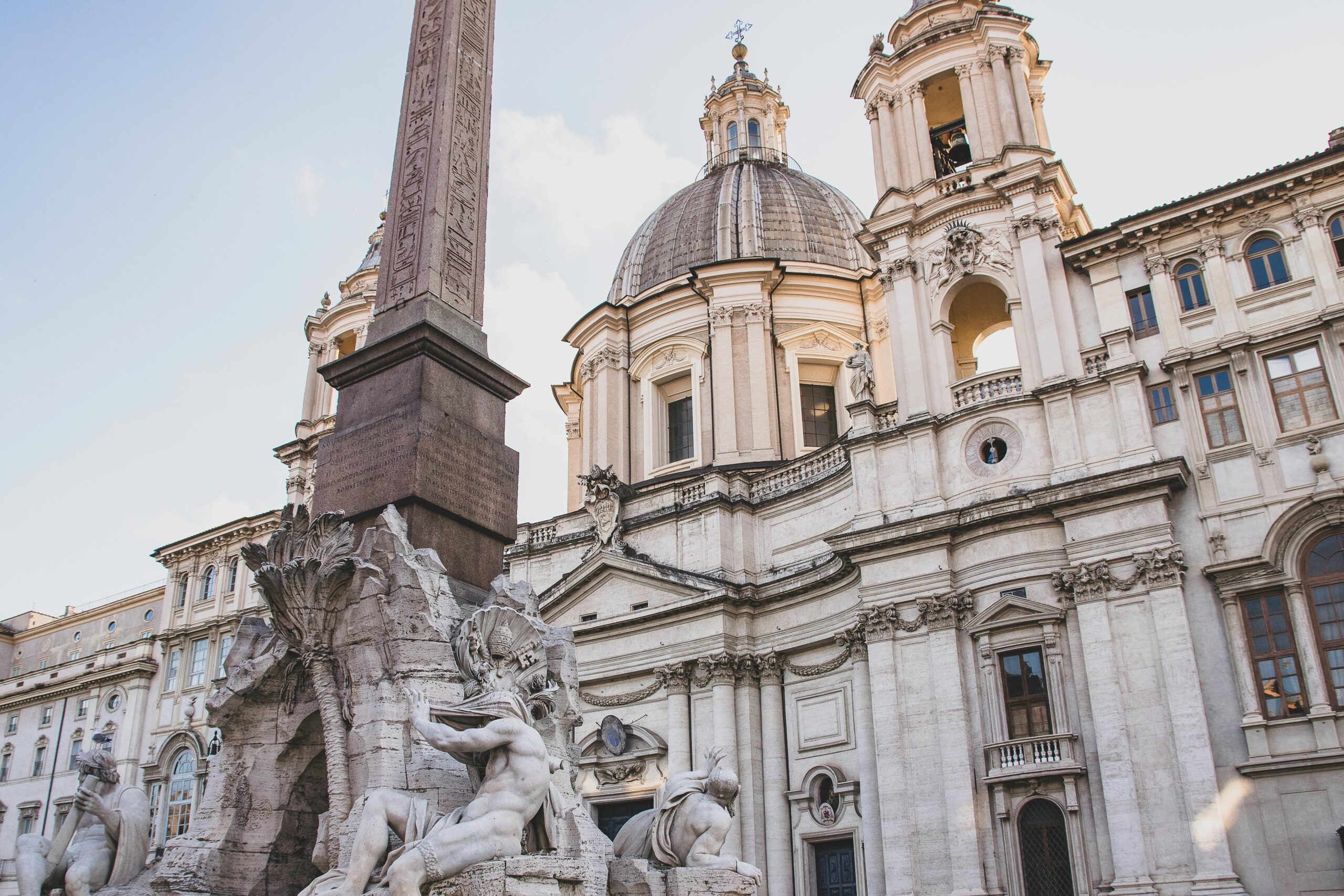
Piazza Navona is a vibrant hub of Baroque architecture and artistic splendor, offering a captivating glimpse into the rich cultural heritage of Italy. Dominated by Bernini’s magnificent Fountain of the Four Rivers, the square is surrounded by grand palaces and the stunning Sant’Agnese in Agone church, designed by Borromini. Visitors can marvel at the ornate sculptures and intricate facades that epitomize the artistic mastery of the 17th century, all while enjoying the lively atmosphere created by street performers and local artists.
The piazza’s unique oval shape, a remnant of its origins as Domitian’s ancient stadium, adds to its historical allure. Today, it is a bustling social hub where locals and tourists alike gather to experience the charm of its outdoor cafes, boutique shops, and bustling markets. Whether you’re exploring its rich history or simply soaking in the vibrant ambiance, Piazza Navona offers an unforgettable experience that seamlessly blends the past with the present.
Details
Address: Piazza Navona, 00186 Roma RM
14. Domus Aurea
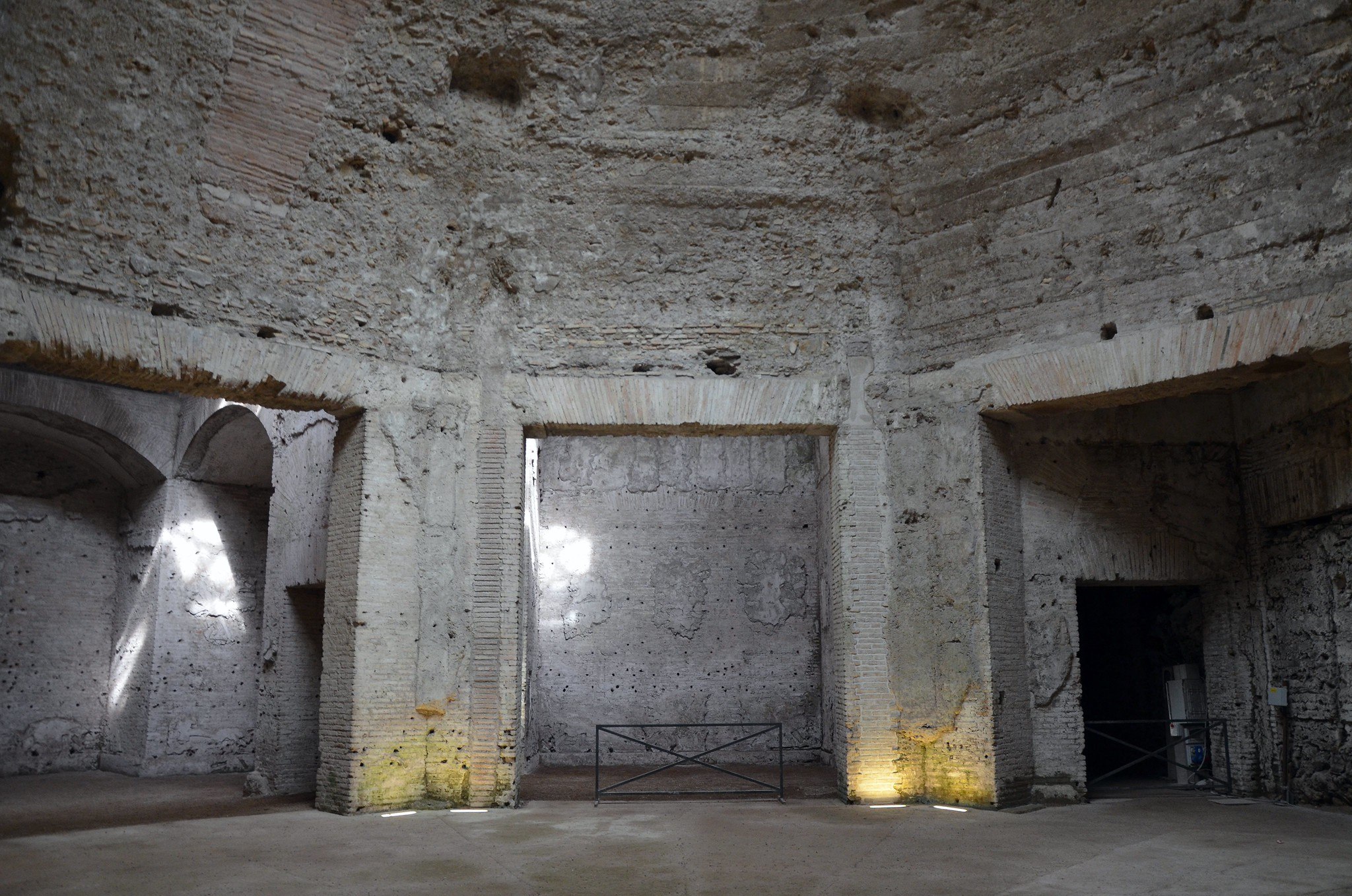
The Domus Aurea, an opulent palace built by Emperor Nero, stands as a testament to ancient architectural ingenuity and imperial luxury. This sprawling complex, originally spanning over 300 acres, is renowned for its grandiose design, featuring elaborate frescoes, intricate mosaics, and pioneering use of concrete. Visitors can explore its extensive underground chambers, which reveal the lavish lifestyle of Rome’s elite and showcase the advanced engineering techniques of the time. The palace’s innovative architectural elements, including the octagonal hall with its revolving ceiling, highlight the creativity and ambition that characterized Nero’s reign.
A visit to the Domus Aurea offers a unique journey into the heart of ancient Roman decadence. The site’s immersive guided tours provide a detailed narrative of its historical significance, restoration efforts, and artistic contributions. As you wander through its majestic halls and hidden passageways, you gain a deeper appreciation for the cultural and architectural milestones of the Roman Empire. The Domus Aurea remains a captivating destination, offering a rare glimpse into the grandeur and sophistication of ancient Roman civilization.
Details
Address: Via della Domus Aurea, 00184 Roma RM
15. Basilica di Santa Maria Maggiore
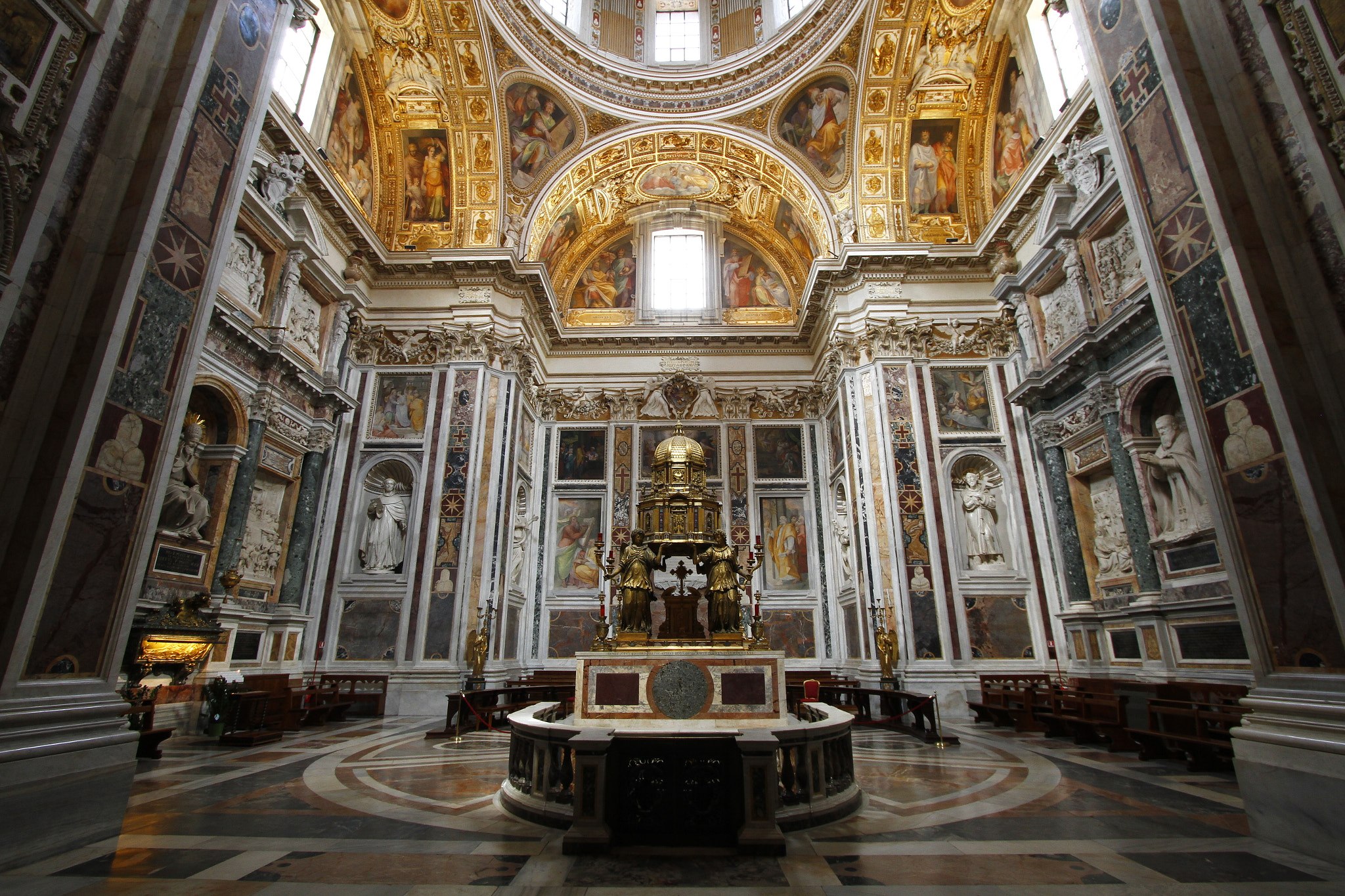
The Basilica di Santa Maria Maggiore stands as a testament to centuries of art, architecture, and religious devotion. As one of the largest churches dedicated to the Virgin Mary, this magnificent basilica is renowned for its breathtaking mosaics dating back to the 5th century, which vividly depict biblical scenes and convey a sense of divine grandeur. The interior boasts a harmonious blend of architectural styles, with a Baroque ceiling adorned in gold and stunning frescoes by renowned artists. Visitors are often awed by the basilica’s opulent chapels, including the Borghese Chapel, which houses the revered icon of the Salus Populi Romani.
This basilica is also significant for its historical and religious relics, such as the Holy Crib, believed to be from the manger of Christ. Its bell tower, the tallest in the city, adds a majestic touch to the already impressive structure. The Basilica di Santa Maria Maggiore is not only a center of worship but also a cultural treasure trove that offers a glimpse into the rich artistic and spiritual heritage of its time. A visit here is an immersive experience of the grandeur of religious architecture and historical depth.
Details
Address: Piazza di Santa Maria Maggiore, 00100 Roma RM
Price: General Admission: €0.
Opening hours: Open 7 am – 6:45 pm daily.
Tips!
- See also: The 30 Best Cities to Visit in Italy: a guide of all the best cities in Italy, that you must visit!
Thank you for reading our blog post!
